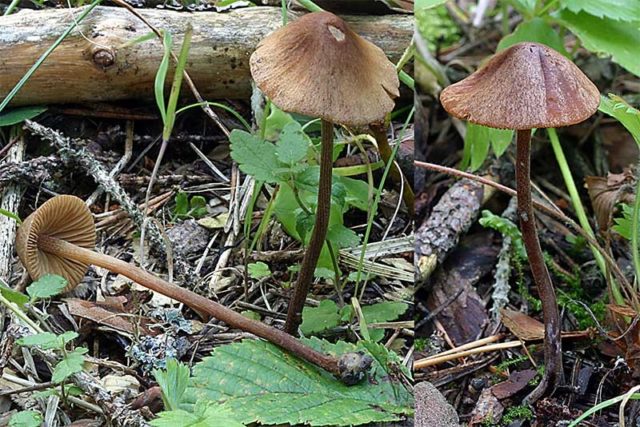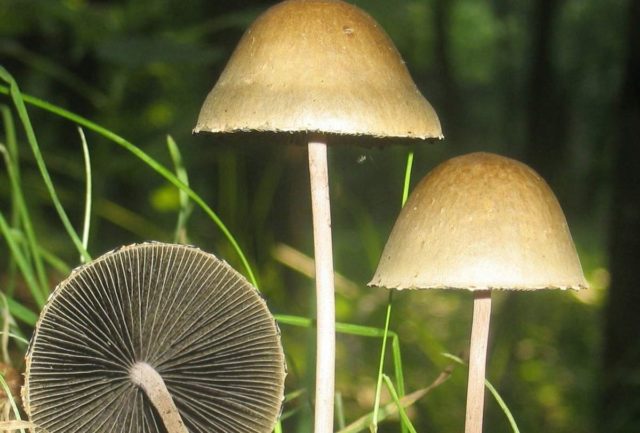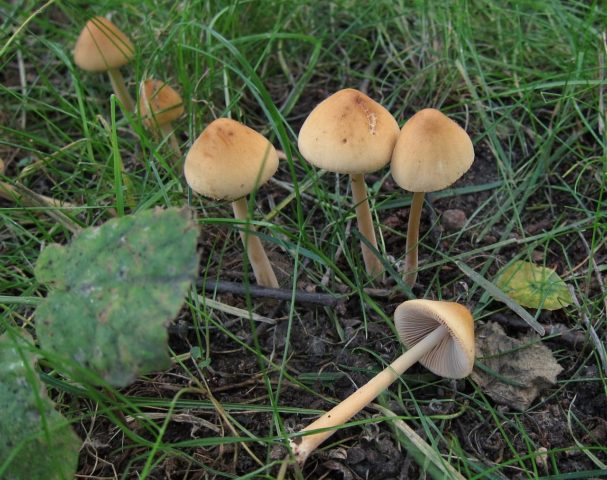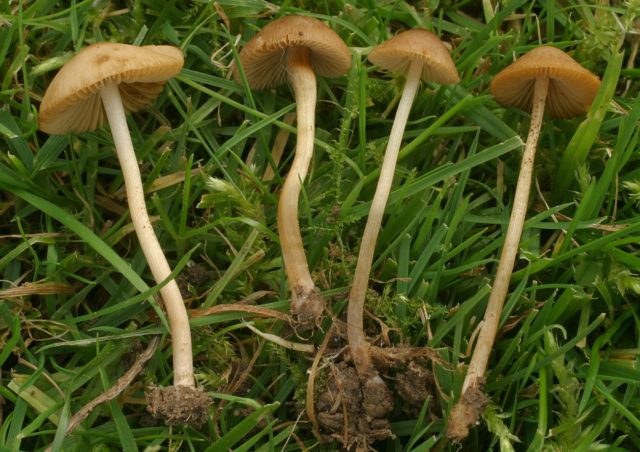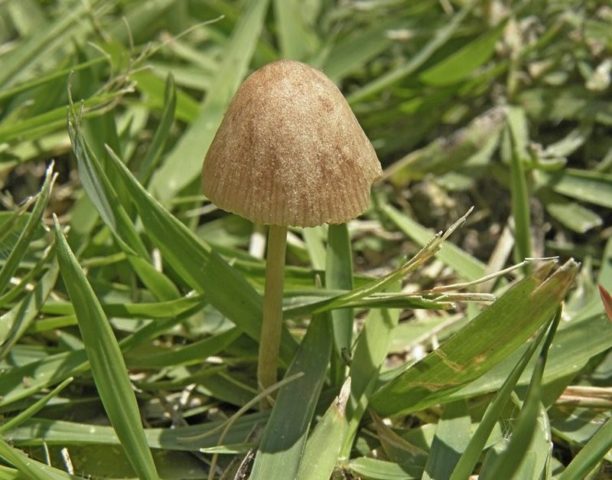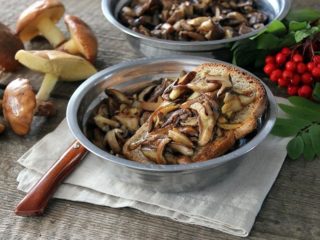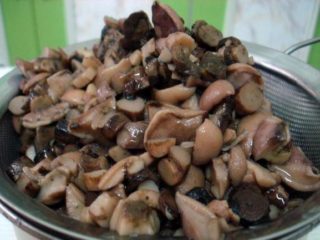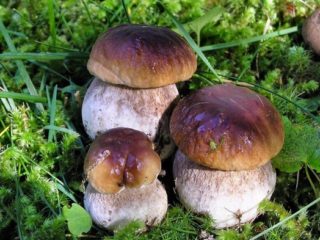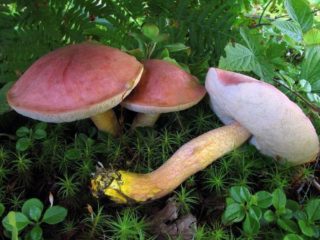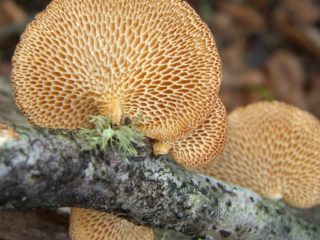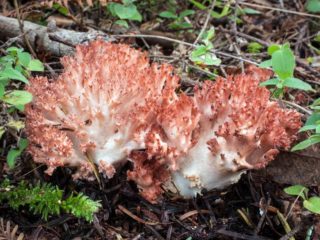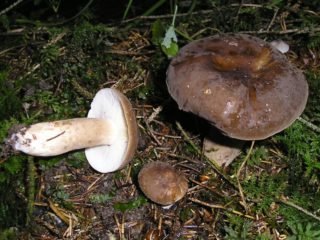Content
Conocybe juniana, also called Conocybe magnicapitata, belongs to the family Bolbitiaceae, genus Conocybe or Caps. This is a lamellar mushroom with an interesting color. Despite its miniature size, the fruiting body looks neat, retaining the characteristic features of a real mushroom.
What do large-headed conocybes look like?
The fruiting body of the large-headed cap is small. The diameter of the cap is only 0.4-2.1 cm. The color varies from light sand to brownish and red-brown. The mushroom that has just appeared has a rounded thimble-shaped shape; as it grows, it straightens out, becoming bell-shaped, and then umbrella-shaped with a pronounced bump in the center.The surface is smooth, longitudinal stripes of plates visible through the thin pulp are visible, the edges are even, and in an overgrown mushroom they slightly bend upward.
The plates are frequent, unfused. The color matches the top or a shade lighter, without the cover. The spores are brown.
The leg is thin, smooth, from 1 to 3 mm thick, in some specimens it grows up to 10 cm. Fibrous, with small scales and longitudinal grooves, the color darkens with age, from reddish-sand to almost black.
Where do conocybe largeheads grow?
It is found everywhere in the Northern and Southern Hemispheres; it is undemanding to climate and soil composition. Grows in small groups, scattered. Loves forest clearings and meadows with an abundance of grass, which provides shelter from the scorching sun. The mycelium bears fruit from early June to late autumn.
Is it possible to eat conocybe largeheads?
The large-headed cap is classified as an inedible mushroom due to its low nutritional value and small size. No toxic substances were found in its composition, so it cannot be poisoned. The pulp of the fruiting body is fragile, dark, with a pleasant mushroom aroma, sweetish, with a faint smell of earth and dampness.
How to distinguish Conocybe macrocephala
Similar externally poisonous counterparts of the conocybe macrocephala are strongly distinguished by their size and color:
- Conical fiberglass. Poisonous. It is distinguished by its larger size, grows up to 7 cm, has a light-colored leg, and an unpleasant odor.
- Paneolus fringe. Toxic. It is distinguished by a lighter, egg-shaped cap, almost black plates, and a grayish stem with a thickening at the root.
- Psilocybe. Poisonous.The cap has a pointed conical shape with edges rounded inwards, with attached descending layers, mucous, as if varnished. The leg is almost white.
The large-headed cap is very similar to representatives of its own species. Fortunately, they are also not poisonous.
- Fiber-shaped cap. Not poisonous. It is distinguished by a lighter, cream-colored cap and the same stem.
- Brown cap. Not poisonous. The cap is light brown, the leg is creamy white.
- The cap is tendery. Not poisonous. The cap is covered with small scales, light-colored, very thin. The leg is white and cream.
Conclusion
Konocibe large-headed is a cosmopolitan species and can be found in the most unexpected places. Loves thickets of tall grasses, which provide the delicate fruiting body with the necessary moisture and protection from the sun. Fruits all summer and the first half of autumn until frost. In dry years, it dries up before it has time to grow. The fruiting body is classified as inedible, although it does not contain toxic substances. Its miniature size and short lifespan make it uninteresting for mushroom pickers. It is quite easy to distinguish it from its poisonous counterparts, since it has characteristic, pronounced features.
